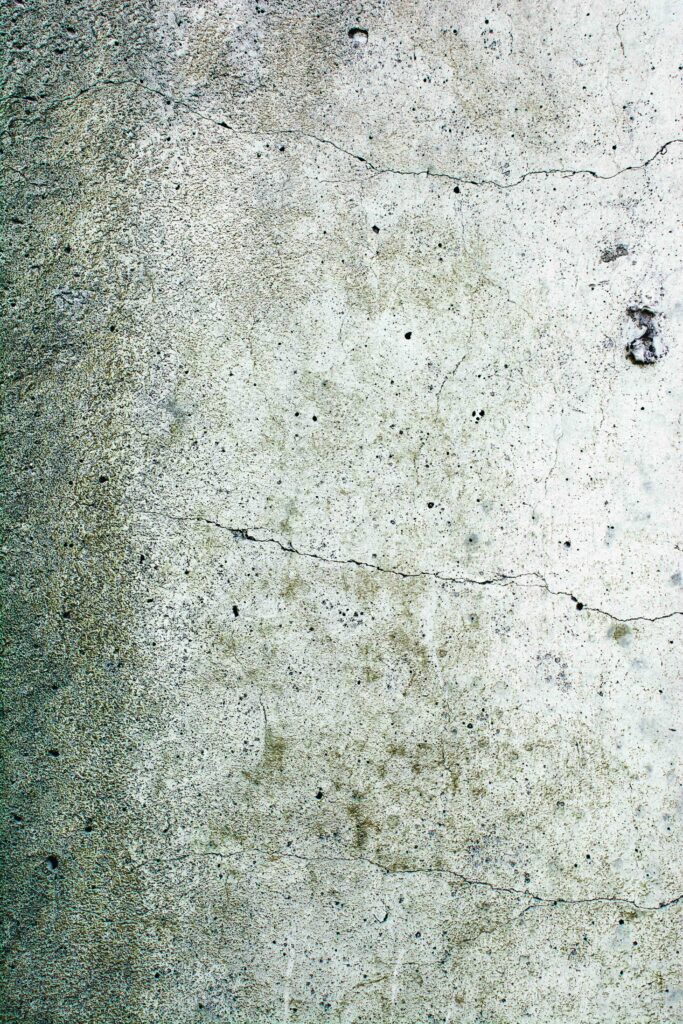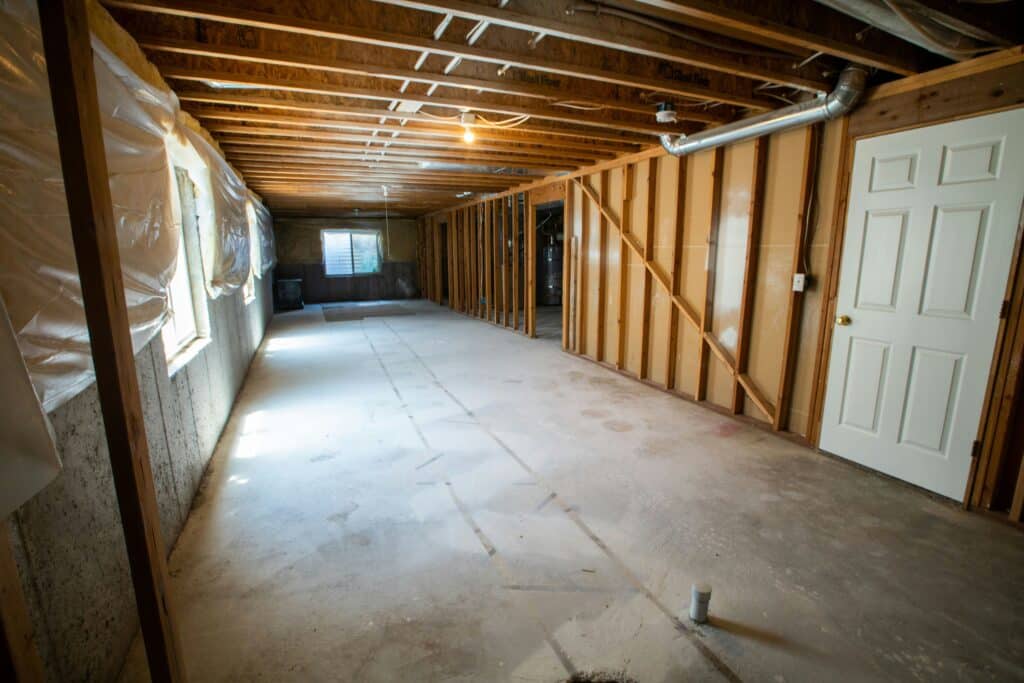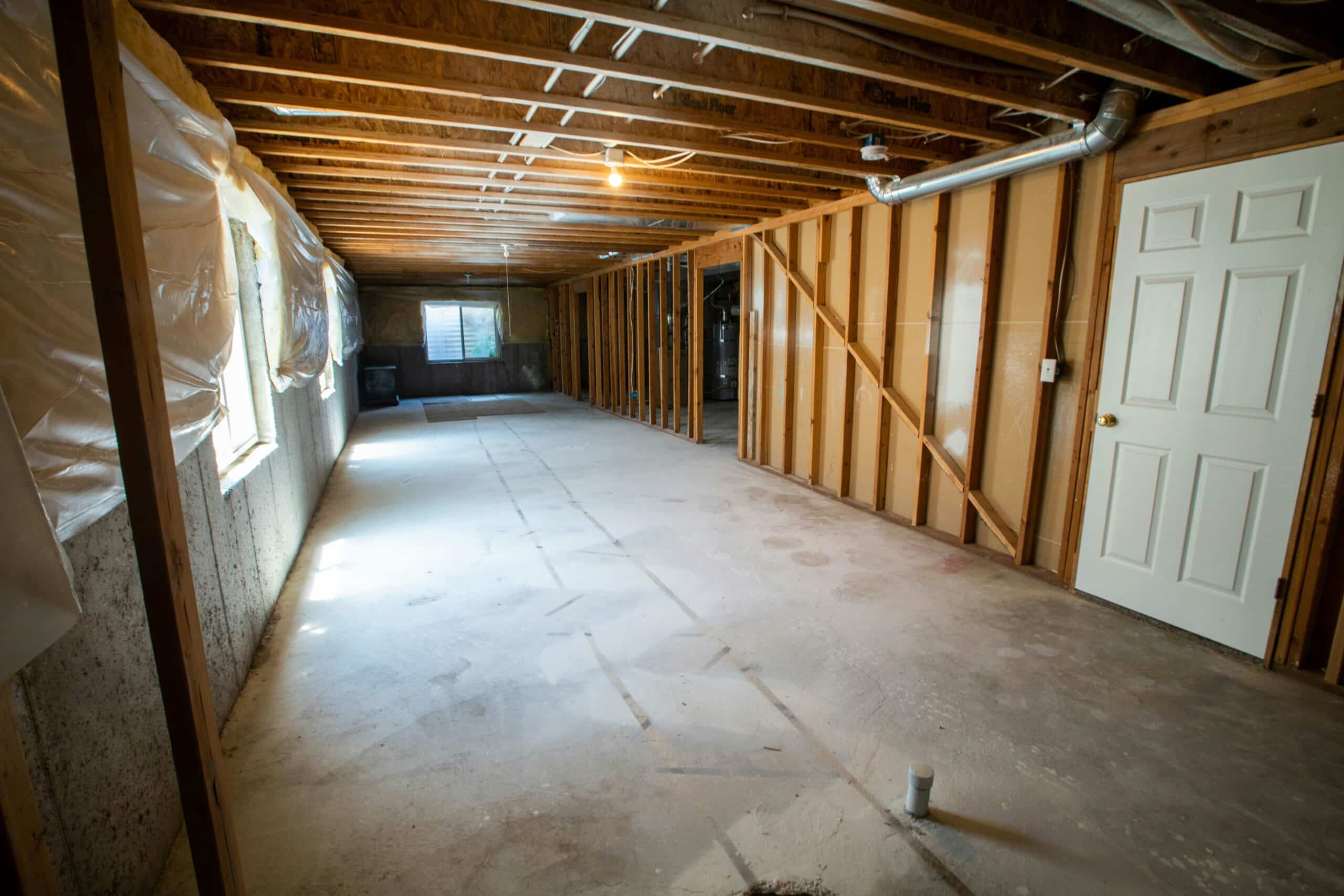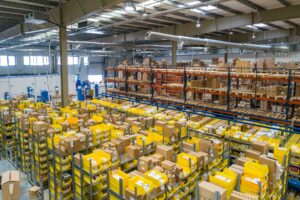Chances are if you’re here, you’re ready to remodel that basement – and you suspect that epoxy flooring is a cost-effective way to beautify your rec room.
Sure enough, hiring an epoxy flooring contractor can be a cost-effective choice for achieving a durable and perfect-looking epoxy floor.What you probably don’t know is that you aren’t likely to be getting an epoxy coating at all!
That’s actually a good thing for both you and your wallet.
Highlights
- We install polyaspartic coatings — a newer and far better alternative to classic epoxy floors. Polyaspartic coatings have largely supplanted traditional epoxy flooring in almost every setting.
- Epoxy flooring is known for problems with yellowing, cracking, and delaminating over time. Polyaspartic flooring is far better for both basements and garages alike because it avoids every problem assocated with traditional epoxy.
- Your epoxy flooring cost (or polyaspartic, in this case) will depend on the square footage of the room and how well-maintained the concrete is. It will generally stay within the realm of $5 to $7 per square foot.
First: Know The Difference Between Polyaspartic and Epoxy Floors
Epoxy flooring has been around since the 1960s.
It became popular not only because it is inexpensive and easy to apply, but also due to its beauty, durability, and the vast customization options. Epoxy coatings can be applied to a variety of surfaces, enhancing both decorative and industrial flooring systems in no time; they are easy to clean and cost-effective, making them an appealing choice for both homes and businesses. Innovations such as metallic epoxy flooring emerged, offering a decorative epoxy coating option that boasts an aesthetic appeal far beyond traditional epoxy.
However, by the mid-90s, the problems with epoxy flooring were beginning to show – and scientists were looking to improve…
The 3 Main Problems With Standard Epoxy Floors
First of all, even the best epoxy floor coating yellows over time.
Direct and constant exposure to UV light accelerates the yellowing process. This is particularly problematic in garages or daylight basements, where you can expect sunlight regularly.
Next, epoxy doesn’t hold up to high heat. When exposed to hot care tires on a garage floor for year after year, for example, epoxy will delaminate and chip, leading to bare patches.
Finally, one of the main pros of epoxy flooring — its hardness and resistance to wear and tear — can be a downside in many situations! Epoxy flooring generally is applied on top of concrete. And concrete, like all materials, expands and contracts with temperature variations.
Epoxy flooring in garages, basements, and spaces that are not climate controlled will inevitably crack over a long enough period.
What’s the punchline? Well, what we all call “epoxy flooring” is actually not epoxy at all!
Polyaspartic is the Superior Epoxy Coating
What our professional concrete coating installers at Everlast Concrete Coatings deploy is actually called polyaspartic resin, a much newer and better alternative to classic epoxy flooring. It can be confusing, as they’re commonly called epoxy coatings, but there are crucial differences.
Polyaspartic resin looks and feels just like epoxy flooring, but due to its unique manufacturing process, it’s not subject to most of the shortfalls of epoxy floors. Polyaspartic coatings are technically a kind of polymer compound, more closely related to plastics than anything else.
Why Polyaspartic Resin Is Better
We don’t need to sell you on this stuff. Just have a look at its advantages compared to epoxy flooring, and we’ll let the facts speak for themselves:
- Polyaspartic coatings cure much faster than most epoxy floors (sometimes in just a couple of hours!)
- Polyaspartic is UV-stable, which means it won’t yellow or degrade under sunlight.
- It is just as durable and resilient as epoxy floors, but more flexible: forget about having to call a contractor next summer to fix the cracks on your garage’s epoxy flooring!
- It’s cheaper in the long run, as it has lower ongoing maintenance costs.
(Additionally, you arguably have more aesthetic control when applying polyaspartic floor coating. This is because when installing epoxy flooring, older installers generally covered the floor more closely with vinyl chips so no UV light could get through to the base coat.)
While poly resin is great for basements and garages, it’s perfect for patios and outdoor concrete, too!
How Much Does It Cost to Get Epoxy Flooring?
The factors affecting the cost of a installed basement floor coating include the size of the area and the condition of the concrete, with our prices typically ranging from $4 to $8 per square foot.
If the concrete surfaces we’ll be coating are cracked, pitted, or otherwise damaged, we need to take care of that first.
What Will It Cost Me To Epoxy My Basement?
Epoxy flooring is popular for both garage floors and basements for good reason: polyaspartic/modern epoxy flooring systems can last a decade or more (in fact, we guarantee ours for 15 years!)
Your price depends on the square footage and the condition of the concrete. It includes labor costs and all of the epoxy flooring materials.
Let’s look at some examples.
If your basement needs extra work…

Let’s say you have a 500-square-foot basement that’s part of an older house. This is common for family homes. Being older, it’s probably been used for longer with less maintenance. Let’s say it has lots of cracks and pitting, which we’ll need to tune up first.
While we provide a free estimate up front, we would expect a project like this to cost around $7 to $8 per square foot, for a total of around $3500 to $4000.
The additional cost considerations here are the extra materials and extra labor to grind and fill pitting or cracks (many times, this can turn a one-day job into two days).
If your basement is well maintained…

Now let’s take the same basement, 500 square feet in size, in a newer home.
Simpler projects like this generally cost $5 to $6 per square foot, for a total of $2500 to $3000.
Fully Guaranteed Basement Floors: Get a Free Quote
At Everlast Concrete Coatings, we pride ourselves on industry leading concrete coatings that will last. We priovide a 15-year warranty on every project.
Have questions? Ready for a quote? Just get in touch!
What About DIY Epoxy?
For those considering DIY epoxy flooring, it’s important to understand the cost, materials, and equipment required for the project. DIY epoxy flooring can be a cost-effective option, but it requires thorough preparation of the concrete surface, including cleaning and repairing concrete damage before applying the epoxy. The overall cost for a DIY project can vary greatly depending on the quality of materials used and the size of the area being covered.
Comparatively, professional installation offers the advantage of expertise and guarantees on workmanship, with the epoxy garage floor cost or basement floor cost generally reflecting a superior final product.
How We Install An Epoxy Floor Coating
The first step is always inspecting your concrete floor. A cracked or pitted floor could stop the coating from adhering as strongly as we’d like, so we’ll use a cement formula to fill deep cracks, and a robust some epoxy filler for small divots or dents.
The next step is thoroughly cleaning the floor before applying a polyurea base coat. Polyurea is similar to polyaspartic resin but works great as a kind of primer because it so strongly adheres even to polished concrete.
After rolling tyhe polyurea on, this is when we can add decorative flakes, which commonly go in not only because they look great but also because they hide dirt so well!
Finally, we apply the polyaspartic top coat to preserve and seal everything, then let it cure.
A solid epoxy coating (or polyaspartic, in most cases!), while complex and potentially requiring professional installation, is a highly beneficial and cost-effective approach to preserving areas prone to heavy foot traffic, vehicle storage, chemical spills or dirt, or simply a lot of family activity. Learn more and get a free quote with Everlast today!





